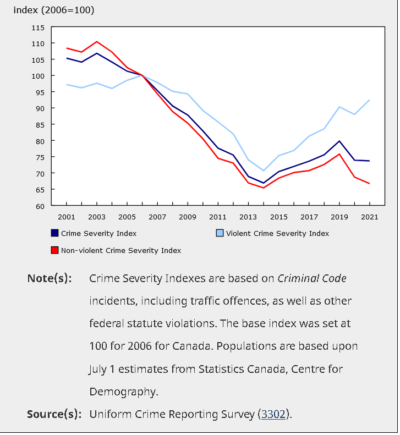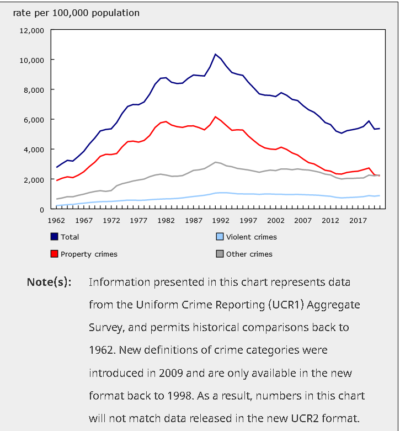 By Staff
By Staff
August 4th, 2022
BURLINGTON, ON
We reported yesterday that the Region of Halton had the lowest ranking on the Crime Severity index in all of Canada and that Halton has held that position for the past 24 years.
A lot of the reasons behind that statement is the geography and the social makeup of the city.
A lot of poor people in Hamilton – a lot of crime as well
Peel Region to the east of Halton has a very mixed diversity which often has high rates of crime. Not always.
Population mix, income and education levels are critical measures. The COVID-19 pandemic continued to impact Canada’s economy, health care system and society in general throughout 2021, changing how people interact, socialize, learn, work and consume. Overall, while police-reported crime in Canada, as measured by the Crime Severity Index (CSI), was virtually unchanged in the second year of the pandemic, there were notable shifts in the nature of reported crimes.
 For the first time since 2006, the year-over-year changes in the Violent and Non-Violent CSIs moved in opposite directions. These shifts provide important insight into the way in which crime in Canada changed following the onset of the pandemic.
For the first time since 2006, the year-over-year changes in the Violent and Non-Violent CSIs moved in opposite directions. These shifts provide important insight into the way in which crime in Canada changed following the onset of the pandemic.
The Violent CSI rose 5% in 2021, reaching a level higher than that before the beginning of the pandemic. The increase in violent crime compared with 2020 was attributable in part to higher rates of level 1 sexual assault, harassing and threatening behaviours, and homicide, among others.
Additionally, the number of hate-motivated crimes reported by police increased by 27% to 3,360 incidents. Higher numbers of hate crimes targeting religion, sexual orientation and race or ethnicity accounted for the majority of the increase.
In contrast, the Non-Violent CSI—which includes, for example, property offences and drug offences—continued to decline (-3%), after a 9% drop in 2020. These two consecutive decreases follow five years of increases. Much of the decline in 2021 was because of lower rates of breaking and entering (-10%) and theft of $5,000 or under (-4%).
The overall CSI changed from 73.9 in 2020 to 73.7 in 2021. This follows a 7% drop in the CSI in 2020, the first decrease after five years of successive increases. The CSI measures the volume and severity of police-reported crime in Canada and has a base index value of 100 for 2006. The police-reported crime rate, which measures only the volume of crime, was 5,375 incidents per 100,000 population in 2021, up 1% from 2020.
Police-reported metrics include only those incidents that come to the attention of police, either through reporting by the public or proactive policing. As a complementary measure, results from the 2019 General Social Survey (GSS) on Canadians’ Safety (Victimization) showed that just under one-third (29%) of violent and non-violent incidents were reported to police. Similarly, just over one-fifth (22%) of incidents perceived to be motivated by hate were reported to police.
 Across the provinces and territories, there were contrasting annual changes in the CSI. From 2020 to 2021 in Canada, six provinces and Nunavut reported increases in their CSI, while the other provinces and territories reported decreases. Among census metropolitan areas (CMAs), or large cities, 22 of 35 reported increases, while the remainder reported decreases or no change in their CSI.
Across the provinces and territories, there were contrasting annual changes in the CSI. From 2020 to 2021 in Canada, six provinces and Nunavut reported increases in their CSI, while the other provinces and territories reported decreases. Among census metropolitan areas (CMAs), or large cities, 22 of 35 reported increases, while the remainder reported decreases or no change in their CSI.
Among the provinces, Quebec (+5%) and Ontario (+1%) reported increases in their CSI in 2021 and therefore had the largest upward impact on the change in the national CSI. The rise in Canada’s two largest provinces was because of relatively large increases in level 1 sexual assault, as well as growth in general fraud in Quebec and an increase in homicide in Ontario.
In contrast, the CSI in the provinces of Alberta (-7%) and British Columbia (-5%) had the largest relative downward impact on the national CSI. The violations driving these decreases were breaking and entering; theft of $5,000 or under; and, to a lesser extent, general fraud. As was the case at the national level, both provinces also reported relatively large increases in level 1 sexual assault.
Sharp rise in the rate of police-reported level 1 sexual assault
The rise in Canada’s Violent CSI in 2021 was primarily driven by an 18% increase in the rate of level 1 sexual assault. This rise accounted for over one-third of the increase in the Violent CSI. In contrast, the rates of police-reported level 2 and 3 sexual assault decreased 5% and 13%, respectively. In total, level 1 sexual assault accounted for 98% of police-reported sexual assaults in 2021.
 Sexual assault is classified in the Criminal Code in three separate categories, depending on the nature and severity of the incident: level 1 involves assault of a sexual nature that violates the sexual integrity of the victim; level 2, sexual assault with a weapon or causing bodily harm, involves sexual assault with a weapon, with threats to use a weapon or causing bodily harm; and level 3, aggravated sexual assault, involves sexual assault that wounds, maims, disfigures or endangers the life of the victim.
Sexual assault is classified in the Criminal Code in three separate categories, depending on the nature and severity of the incident: level 1 involves assault of a sexual nature that violates the sexual integrity of the victim; level 2, sexual assault with a weapon or causing bodily harm, involves sexual assault with a weapon, with threats to use a weapon or causing bodily harm; and level 3, aggravated sexual assault, involves sexual assault that wounds, maims, disfigures or endangers the life of the victim.
Overall, there were 34,242 police-reported sexual assaults (levels 1, 2 and 3) in 2021, representing 90 incidents per 100,000 population. This marks the highest rate since 1996. Before a decrease in 2020—the first year of the pandemic—the rate of sexual assault had risen steadily for five years. All provinces reported an increase in 2021, whereas all territories reported a decline. Similarly, of the 35 CMAs, 29 reported increases.
Despite considerable public discussion of issues around sexual violence in recent years, the number of sexual assaults reported by police is likely a significant underestimate of the true extent of sexual assault in Canada, since these types of offences often go unreported to police. For instance, the most recently available self-reported data from the 2019 GSS on Victimization show that 6% of sexual assault incidents experienced by Canadians aged 15 and older in the previous 12 months were brought to the attention of police.
Pandemic-related lockdown conditions, particularly in the first year of the pandemic, could have exacerbated the underreporting of sexual assaults. Inversely, the later easing of restrictions might have led to an increase in reporting to police, either by victims or by third-party individuals or services.
Through constant and continued public warnings and the offering of places people who are threatened can call and turn to for help – Halton has been able to keep a bit of a lid on some of the more violent incidents and keep the public aware that there are options that wil get them out of dangerous situations.















Reported crimes vs actual crimes are vastly different numbers. Many don’t report crimes to Halton Police because too many times in the past the police have done nothing to help.